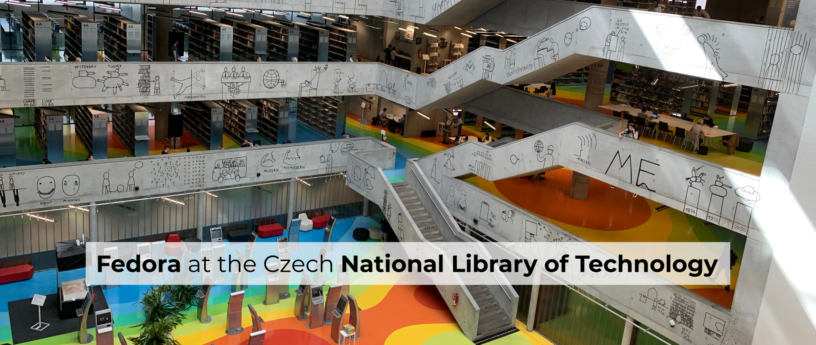Where do you turn when you have a fleet of public workstations to manage? If you’re the Czech National Library of Technology (NTK), you turn to Fedora. Located in Prague, the NTK is the Czech Republic’s largest science and technology library. As part of its public service mission, the NTK provides 150 workstations for public use.
In 2018, the NTK moved these workstations from Microsoft Windows to Fedora. In the press release announcing this change, Director Martin Svoboda said switching to Fedora will “reduce operating system support costs by about two-thirds.” The choice to use Fedora was easy, according to NTK Linux Engineer Miroslav Brabenec. “Our entire Linux infrastructure runs on RHEL or CentOS. So for desktop systems, Fedora was the obvious choice,” he told Fedora Magazine.
User reception
Changing an operating system is always a little bit risky—it requires user training and outreach. Brabenec said that non-IT staff asked for training on the new system. Once they learned that the same (or compatible) software was available, they were fine.
The Library’s customers were on board right away. The Windows environment was based on thin client terminals, which were slow for intensive tasks like video playback and handling large office suite files. The only end-user education that the NTK needed to create was a basic usage guide and a desktop wallpaper that pointed to important UI elements.

Although Fedora provides development tools used by the Faculty of Information Technology at the Czech Technical University—and many of the NTK’s workstation users are CTU students—most of the application usage is what you might expect of a general-purpose workstation. Firefox dominates the application usage, followed by the Evince PDF viewer, and the LibreOffice suite.
Updates
NTK first deployed the workstations with Fedora 28. They decided to skip Fedora 29 and upgraded to Fedora 30 in early June 2019. The process was simple, according to Brabenec. “We prepared configuration, put it into Ansible. Via AWX I restarted all systems to netboot, image with kickstart, after first boot called provisioning callback on AWX, everything automatically set up via Ansible.”
Initially, they had difficulties applying updates. Now they have a process for installing security updates daily. Each system is rebooted approximately every two weeks to make sure all of the updates get applied.
Although he isn’t aware of any concrete plans for the future, Brabenec expects the NTK to continue using Fedora for public workstations. “Everyone is happy with it and I think that no one has a good reason to change it.”






Sumit Bhardwaj
Good to hear such big success story. I hope and try that more and more people become aware of this.
I myself am also a long time Fedora user since 2001. Never felt at home with anything else.
svsv sarma
I am glad that Fedora found it’s due in the public places. It is also good news that Fedora is recognized to be alternative to MS Windows. I must congratulate the Fedora team. Keep it up folks! A big THANK YOU for the good work.
Ivan
I went to a university recently that used Fedora 29 (I think) workstations. It is a very good operating system for organizations, and I am always glad to see it in use
Andy Mender
Super glad to read this success story and I agree Fedora was a no-brainer in a RHEL-heavy environment. Props for choosing Ansible as well :). It’s my favorite provisioning tool!
jesse
Just wondering if they used KDE Plasma or Gnome 3?
Ben Cotton
My understanding is that they used Fedora Workstation (so GNOME 3), but I’ll follow up on that.
Miroslav Brabenec
Yep, Ben is totally right. We are running Fedora Workstation with Gnome 3. The only extra thing is Gnome shell extension indicating disk quota usage, since we are using network mounted home folders.
Artur
Have you considered installing dash to dock extension? Having the dock hidden in dash is probably not intuitive for most users. It certainly wasn’t for me. That’s the single most hated feature of Gnome in my case. 🙂
Lukas
Nice! Very, very nice! I like the way they’ve upgraded workstations to Fedora 30. I am curious about the process that provides daily updates. Is there a chance for some details?
Miroslav Brabenec
There is systemd timer which calls provisioning callback to AWX (simple curl rest call). The interesting part of the ansible playbook is task:
name: install security updates
dnf: name=’*’ state=latest security=yes
Lukas
Nice! Thanks.
K. de Jong
For these use cases, the Fedora Silverblue release would be suitable. Reboot and updates are applied while the system is super secure since the system is immutable and sandboxed.
Interesting that they don’t make use of FleetCommander to push policies to the GNOME desktop.
Luke Rawlins
Creating the wallpaper that pointed out important aspects of the new UI was a really creative idea!